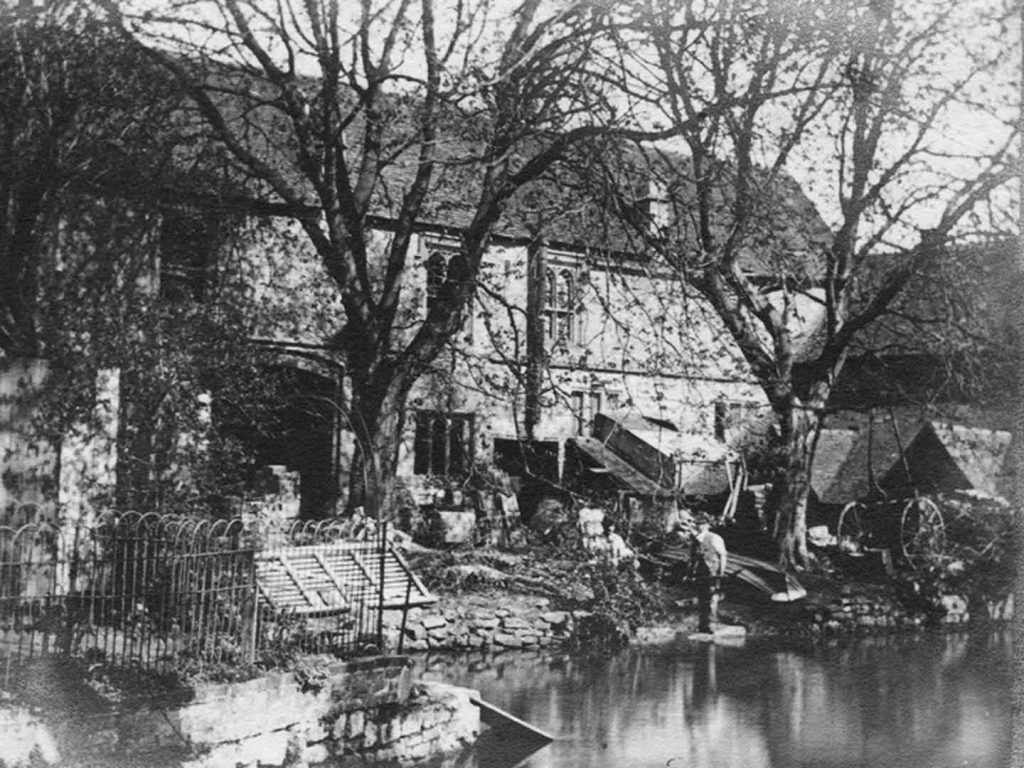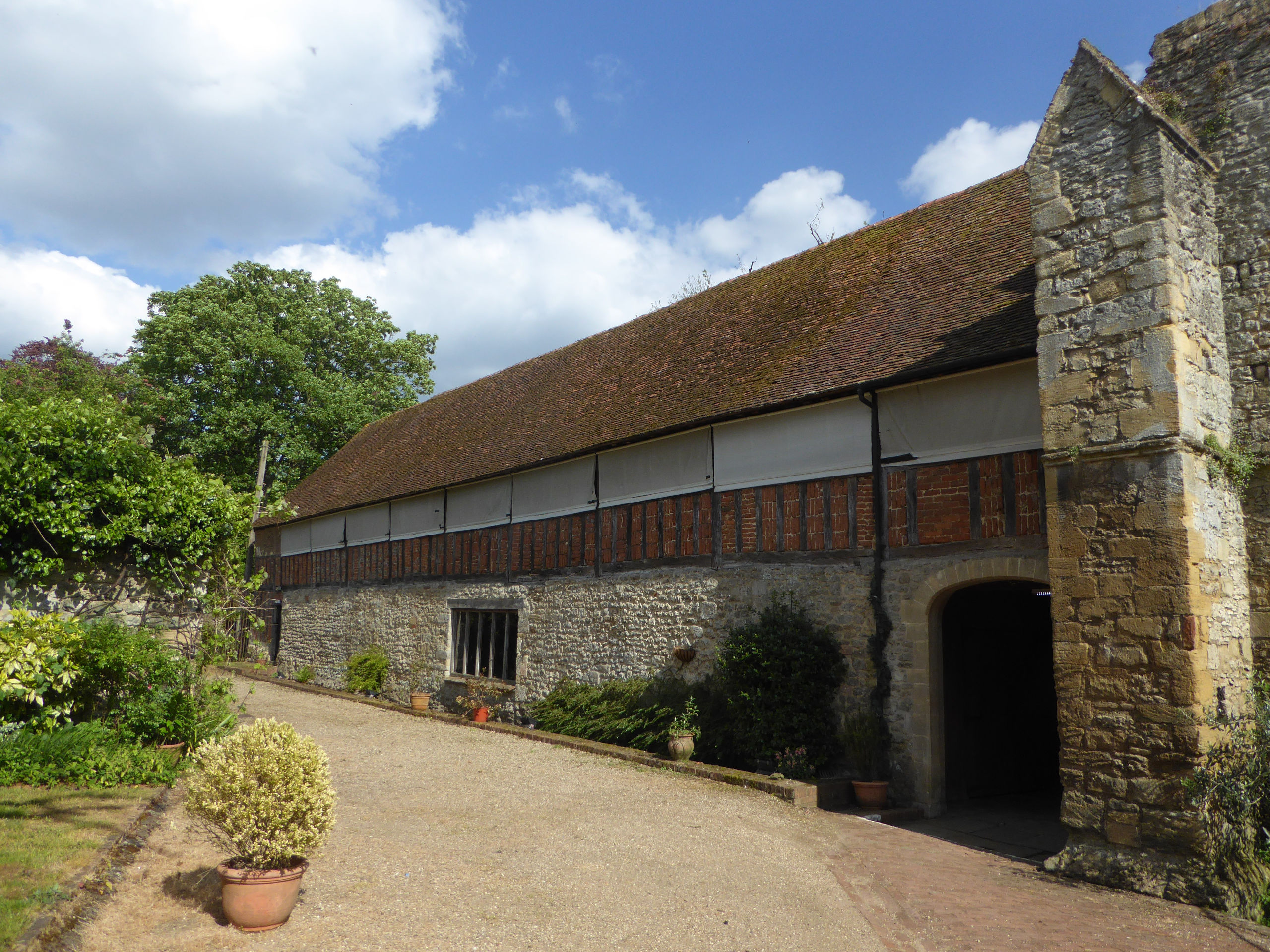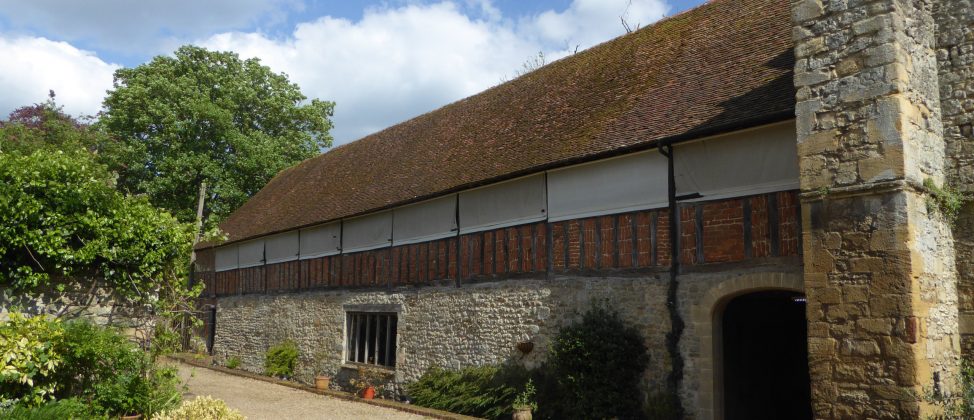The Story of Abingdon Abbey
The First 400 Years
According to 12th century chronicles a double foundation comprising a monastery dedicated to St Mary and a nunnery dedicated to St Helen was established in Abingdon by the brother and sister Hean and Cilla, members of the royal house of Wessex, towards the end of the 7th century. However, by the end of the 10th century, following repeated attacks by the Danes, the foundation had seriously declined and the buildings were in ruins.
In 953 King Edred of Wessex granted the old monastery to Ethelwold, a monk at Glastonbury. Ethelwold translated the Rule of Benedict into Old English and established the rededicated Abbey of St Mary as a Benedictine foundation. He became the first abbot of the rededicated abbey and remained in post until 963 when he was appointed Bishop of Winchester. While he was abbot, he oversaw the rebuilding of the church and the domestic quarters, the construction of the corn mills and the digging of the millstream. In this period Abingdon Abbey became one of the most cultured and wealthy monasteries in England.
The Normans
Following the Norman conquest in 1066, the abbey was forced to grant lands to Norman lords, and in 1071 the Saxon abbot Ealdred was replaced by a Norman, Adelelm. In 1100 Henry I appointed Faritius, an Italian monk-physician, as Abbot of Abingdon. Faritius rebuilt the monastic domestic quarters and the church. The layout remained basically the same during the following centuries, although the buildings were frequently enlarged and embellished. The abbot’s chamber and hall built by Faritius was a fine mansion, a fitting home for the Abbots of Abingdon who were important figures in both Church and State.
The 14th century
The 14th century was a time of strife throughout England, and Abingdon was no exception. The townspeople frequently clashed with the abbey over its rigid control of the town. Matters came to a head in 1327, against the backdrop of the civil war between Edward II and his wife Isabella, when the townspeople broke into the abbey, looting and burning, and the monks fled in panic. Major work was necessary to rebuild and repair the abbey church.
The townspeople continued their attempts to weaken the abbey’s control, using lawsuits rather than force of arms. However, despite these efforts, the abbey retained control over the town until the Dissolution of the Monasteries in 1538.
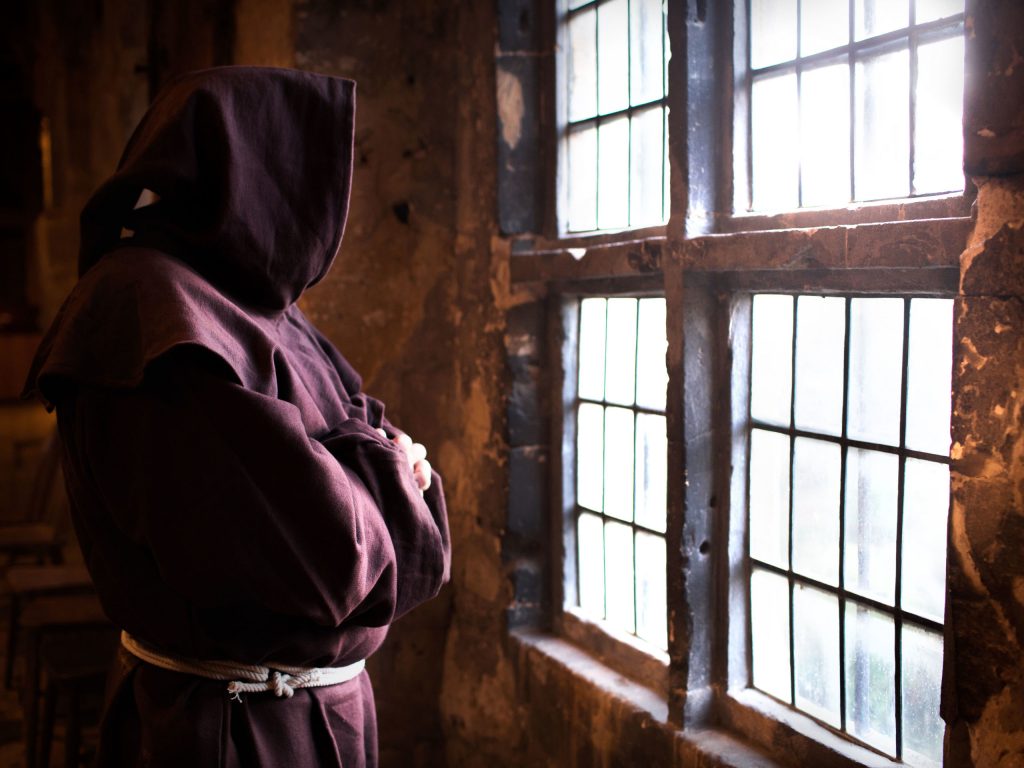



The 15th century
Hostilities between the town and the abbey subsided. The wool and cloth trades prospered, and the wealth of the town increased. The monks led comfortable lives. The prior and other officials had their own houses within the precinct, as well as servants and horses. Although there were only about 30 monks, many lay-people were employed at the abbey to administer its vast possessions and attend to the needs of numerous guests. The most interesting abbot of this period was John Sante, who also held a number of diplomatic posts in England and at the Vatican. However, he fell out of favour when Henry VII came to the throne, and was accused of ‘Yorkist plotting’ and heavily fined.
The Dissolution: 9 February 1538
The Act of Supremacy in 1534 declared Henry VIII the Supreme Head of the Church of England. This and subsequent Acts gave the Crown the authority to close the monasteries in England and Wales and divert their income into the royal coffers. The smaller monastic houses were compulsorily closed in 1536, and then it was the turn of the larger monasteries, including Abingdon which surrendered voluntarily. On 9 February 1538 Abbot Thomas Rowland signed the Deed of Surrender and the long history of Abingdon Abbey came to an end. The 24 monks and the servants all received pensions, and the abbot was allowed to retire to Cumnor Place for life, also with a generous pension.
However, there was a sting in the tail for the king: the community had made careful preparations before leaving voluntarily. The abbey had been stripped of almost all valuables and just an empty shell remained. The king considered turning the abbot’s lodging into a royal residence, but this plan was abandoned and within a few weeks of the closure of the abbey the valuable lead and stone was removed from the church and transported by river to London to be used for other building purposes.




Click on an image to view a larger version and the gallery, and the X to close the gallery
What happened next? The abbey site after 1538
In 1553 the abbey precinct was purchased from the Crown by the miller William Blacknall who already leased the abbey mills. By then the abbey church and most of the monastic buildings had been demolished. In 1560 Blacknall sold the Gateway and St John’s Hospital to the newly formed Borough of Abingdon and they remain in use as civic buildings to this day. The rest of the precinct passed out of the hands of the Blacknall family in 1629, after which it was gradually disposed of. However, after nearly 300 years the private house, Old Abbey House, and garden built on the site returned to public ownership in 1923.
The abbey bakehouse (now 18 Thames Street) was sold to the Borough of Abingdon in 1637 and became a bridewell (a prison for petty offenders). The Checker Hall (now the Unicorn Theatre) also became part of the bridewell. In 1812 the prisoners were removed to the new gaol in Bridge Street (now the Old Gaol apartments), and the bridewell was used as housing. The buildings eventually became derelict and in 1944 were saved from demolition by the Friends of Abingdon.

The Checker and Long Gallery were used as a brewery, the Abbey Brewery, from the end of the 16th century until 1895. In the late 18th century these buildings were known as Starve Castle, as can be seen in this watercolour painted by the teenaged JMW Turner in about 1793. For most of this time the buildings were leased to the brewers by the Borough of Abingdon.
Although the abbey and most of its ecclesiastical buildings have long disappeared, it is very likely that some fragments still remain in old walls and buildings throughout the town, and in Mr Trendell’s Folly in the Abbey Gardens.
Would you like to join our team of volunteers?
You could help with greeting visitors and guiding historical tours of the buildings
A Historical Miscellany
This is an eclectic and unsystematic mix of articles and cross-references, a potpourri of interesting and little-known facts about the Abbey buildings. If you know of any historical nuggets about the buildings, that might be included in this section, please contact us.
Long Gallery Wall Paintings
The Long Gallery contains the remains of a wall painting on the plaster above one of the cross beams. These remains have been dated to the early 16th century by an expert from the Landmark Trust. READ MORE »
Long Gallery Timber Dating
Sampling of the timbers was carried out in February 2013 by Drs Dan Miles and Martin Bridge, and was successful in pointing to a year during which the Long Gallery was constructed. READ MORE »
Geophysical Survey of the Abbey Undercroft
The Undercroft in the Abbey Buildings has a floor which, to put it mildly, is uneven. Before pressing on and resurfacing the floor however, it was decided to commission a geophysical survey to find out what, if anything, might lie underneath it. READ MORE »
Abbey Gardeners’ Financial Reports
The Obedientiars were officers who once worked in Abingdon Abbey. Their accounts were recorded in Latin in a book edited by REG Kirk and published in 1891. READ MORE »
The Abingdon Missal
The Abingdon Missal is a 15th Century manuscript held by the Bodleian Library in Oxford. READ MORE »
The Abingdon Monk’s Map
The Monk’s Map of Abingdon was originally believed to have been made by a monk from Abingdon Abbey in the 15th century. READ MORE »




The Existing Buildings
Checker Hall (Unicorn Theatre)
The Checker Hall, now the Unicorn Theatre, dates from the 15th century. In Roger Amyce’s Survey of 1554 it is described as the ‘Granitory or Garner’ which suggests that it may have orginally been a granary. It has a fine mid-fifteenth century roof which was revealed when the building was restored. The miller William Blacknall, owner of the abbey site after 1553, used Checker Hall as his dwelling house. In subsequent centuries there were many changes to the floors. windows and doors as the building was divided into a number of small cottages, some of which were still in use when the Friends of Abingdon acquired the building in the 1940s.
In 1952 Alan Kitching, Drama Advisor to Oxfordshire County Council, and his wife Frances were walking through the ruins of the Abingdon Abbey Buildings. It occurred to him that the space in what was called the Checker Hall would make a brilliant little theatre. Alan proposed the idea of an Elizabethan-style theatre in July 1952 and construction work began in the following November. The first production in the newly renamed Unicorn Theatre was The Two Angry Women of Abingdon (performed by Abingdon Drama Club) in Coronation Week, June 1953. The summer season that year also included plays by Congreve and Priestley, three musical concerts, talks on the Elizabethan and Restoration Theatre, and poetry readings. Alan Kitching was also the producer, between 1959 and 1974, of Unicorn stagings of twelve of Handel’s Italian operas, unseen in England since the composer’s lifetime.
In 2013, the 60th anniversary of the opening of the Unicorn was celebrated with a gala performance of Handel’s opera Semele, produced in conjunction with Jackdaws Music Education Trust. Read more »



Medieval Cinema
An exciting event at the Unicorn was the launch of the Unicorn Cinema at Christmas 2017 – 21st century entertainment in a 15th century setting. Cinema had been absent in Abingdon for over 30 years and there was a discernible latent demand by the town’s burgeoning population who didn’t want to travel several miles to see new films. Cinema entertainment attracts a broad cross-section of our community and importantly supports the town’s successful evening economy with many excellent town centre pubs and restaurants.
A community group, including the Friends of Abingdon, had found an enthusiastic cinema operator, the Regal Cinema, who wanted to open a cinema in Abingdon. However, a town centre site could not be found so the trustees agreed to a trial season at the medieval Unicorn Theatre. The pent-up demand was illustrated by the sale of 12,000 tickets in the first five months. The trial became a season, and the success enabled the operators to open another screen, the Abbey Cinema, at the Guildhall which was able to offer a full daily programme.
We are delighted to work with Trustees create a medieval cinema in these wonderful heritage buildings. The Unicorn Theatre provides us with a unique, intimate and atmospheric venue, much loved by the local community and visitors to the town. We have had great fun and wholeheartedly support efforts to enhance the building and enable our future collaboration which includes exciting new initiatives to attract young people and disadvantages communities in the post-COVID recovery.
– Sue Wiper, Abbey Cinema





The Checker
The Checker, with its buttressed stone walls, lancet windows and tall chimney, dates from about 1270 and is the oldest and most imposing building in the group. The chimney, which is one of the best examples of a 13th century chimney in England, is best viewed from the small car park north of the Unicorn Theatre.
The Checker was probably built as the business office of the abbey. The upper floor was originally one large room, heated by a large fireplace, providing spacious accommodation for the abbey treasurer and for the storage of documents and bills. It was accessed from an outside staircase on the north wall, now demolished and replaced by a modern staircase. In 1340 the room was divided into two, and a new roof with two gables was constructed. It is not known why this was done. The windows in the south wall were blocked when the Abbey Mill House was built between the Abbey Buildings and the corn mill in 1730.
The Undercroft is a fine vaulted chamber below the upper floor of the Checker. As in the upper floor the original window and door in the south wall are blocked by the Abbey Mill House. Although it is known that in 1534 it was being used as a wine cellar, the presence of a fireplace suggests that at some time it had been used for other purposes.



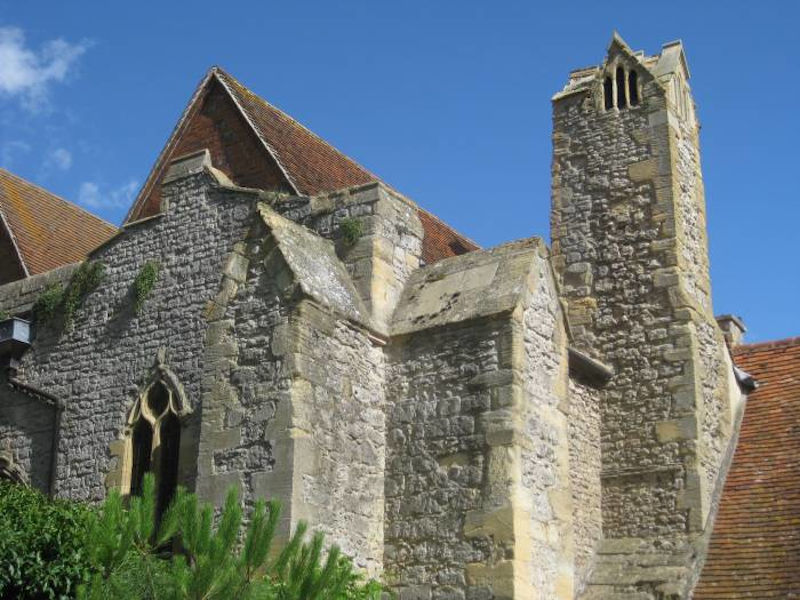


The Long Gallery
The building now known as the Long Gallery dates from the late 15th century. The south side is built entirely of stone. However, the north side consists of timber framing, partially infilled with brick, above a stone wall.
The original layout of the upper floor was very different from that existing today. It consisted of a series of rooms accessed from a passage along the north side. Mortices in the timbers show where the partitions existed. Although this layout is similar to that of a medieval inn, it is not clear whether this was the original purpose. An imposing fireplace on the south side near the east end and a painting on the plaster above one of the cross beams suggest that if it was a lodging, it may have been reserved for more important visitors to the abbey. Alternatively, it may have been converted into a comfortable dwelling house after the Dissolution.
Hidden among more modern graffiti on the mantel of the large fireplace is an example of 15th century graffiti – an incised carving of the Beaufort coat of arms (a portcullis with a bar sinister). There is also a set of incised perfect circles on the frame of the window immediately to the right of the fireplace. These may be “witches’ marks”, which are frequently found on the doors and windows of medieval buildings and were believed to guard against the entry of evil spirits.




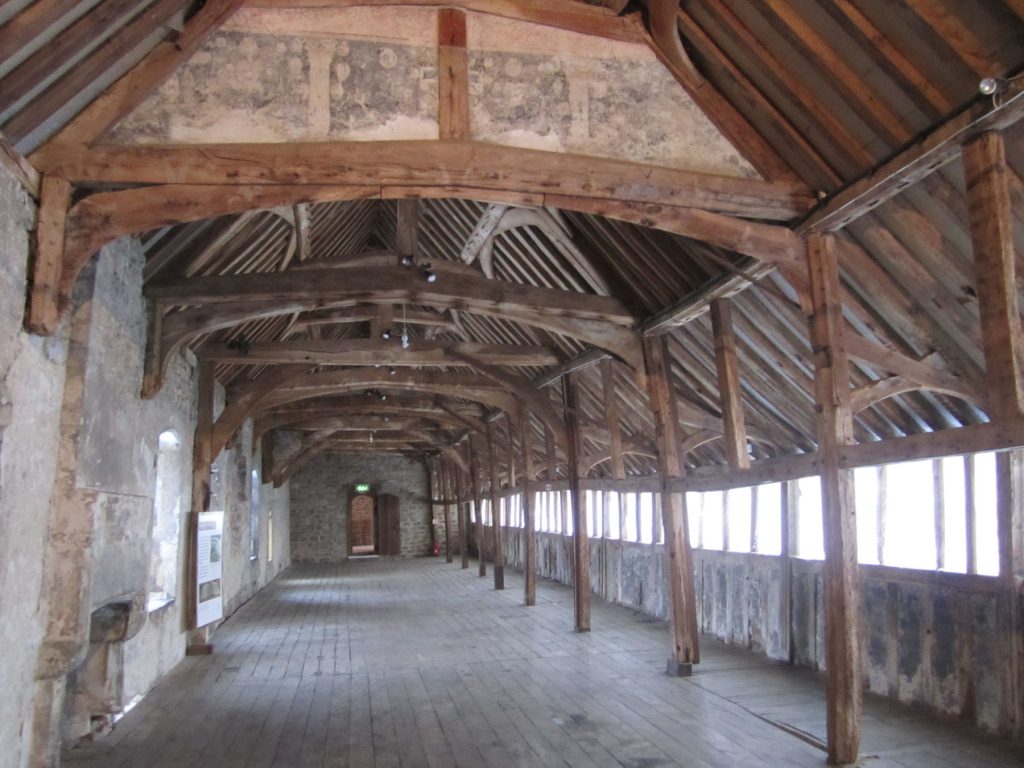

The Lower Hall
A staircase at the east end of the Long Gallery leads to the Lower Hall. This has been changed many times since the Dissolution, and its original use and appearance are uncertain. Part of the south wall was demolished to allow the entrance of carts when the Long Gallery and the Checker became the Abbey Brewery in the late 16th century. This entrance was filled in and other repairs were made after the brewery closed in 1895.




Thames Street, the Mill and the Millstream
The Millstream was dug over 1000 years ago to drive two corn mills. Amyce’s survey of 1554 describes a large building located on what is now Thames Street which contained a malthouse, a brewhouse and a bakehouse, which no longer exist. This building was separated from the Checker by a narrow passage (a slype). Abbey Mill House, located between the Checker and the mill, facing down Thames Street, was built in 1730 and replaced a gateway with a loft over it.
